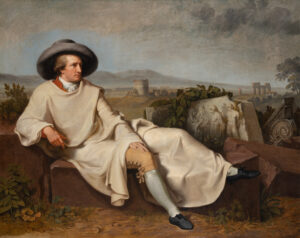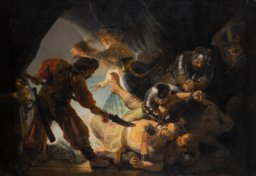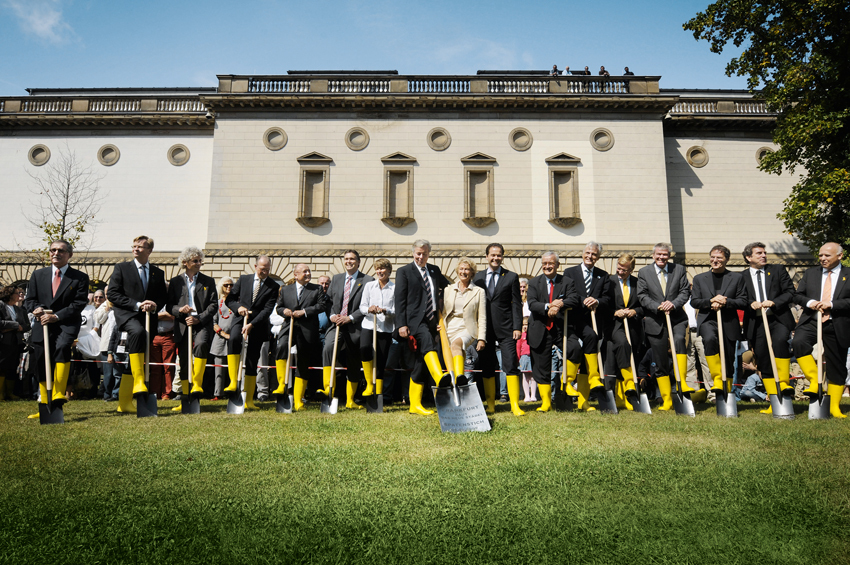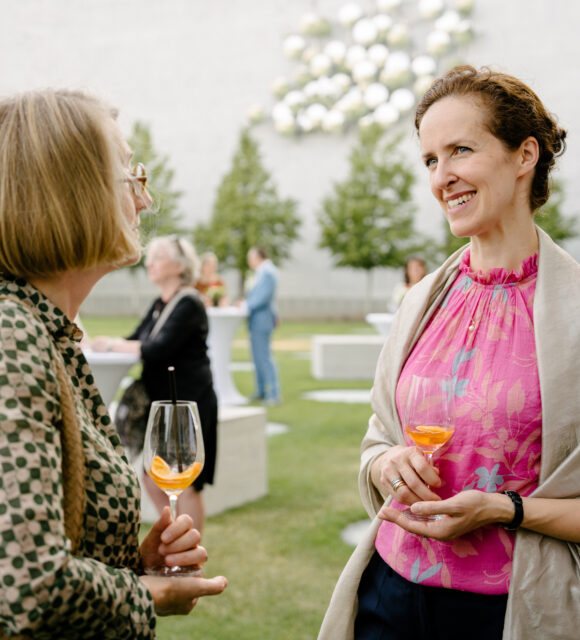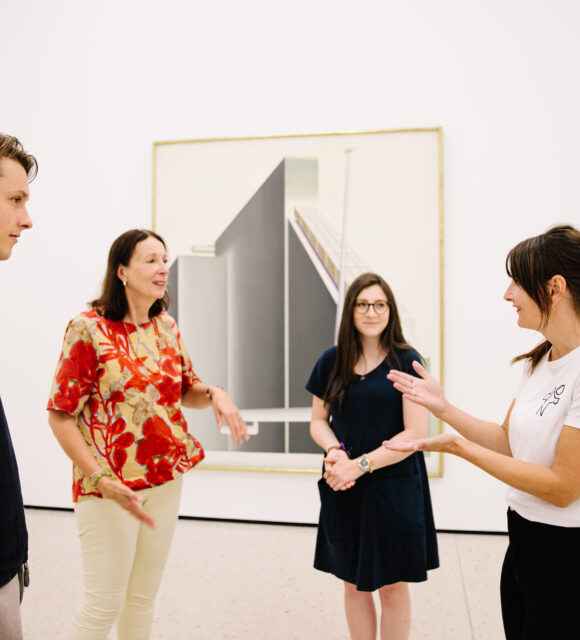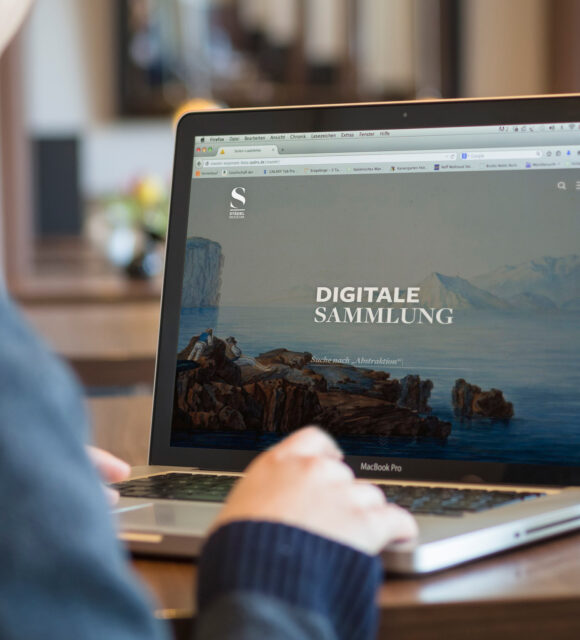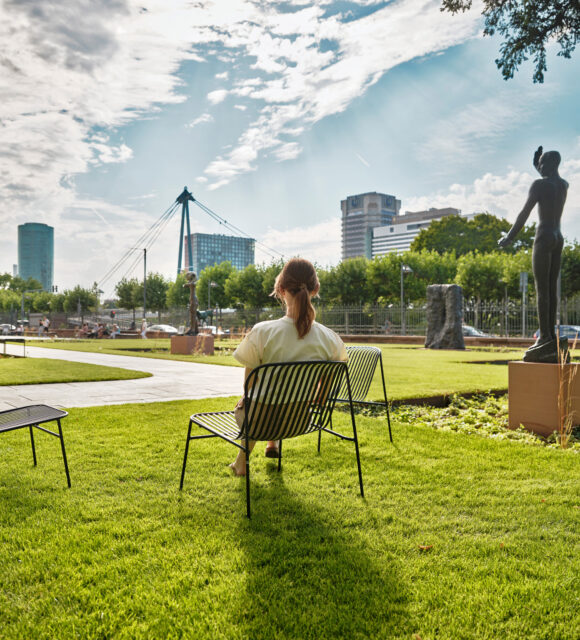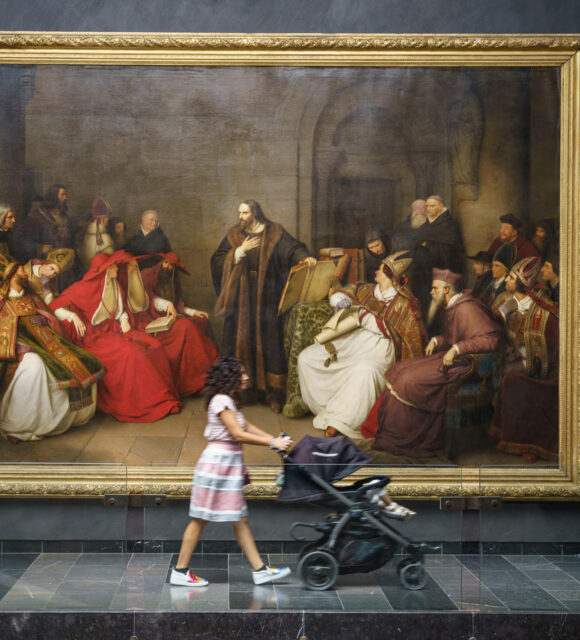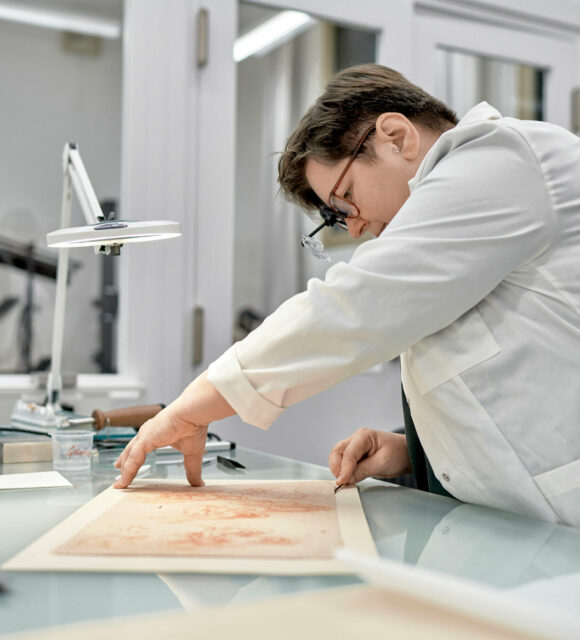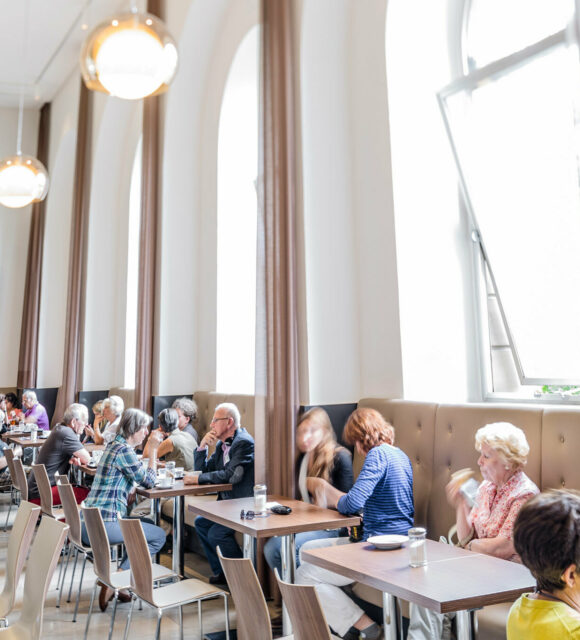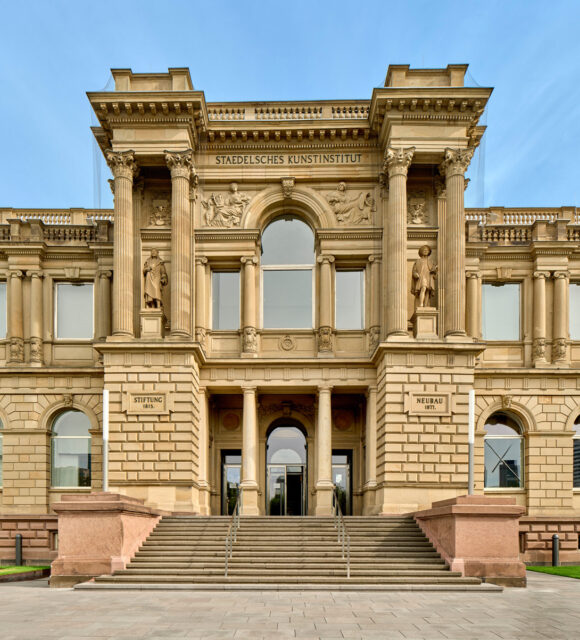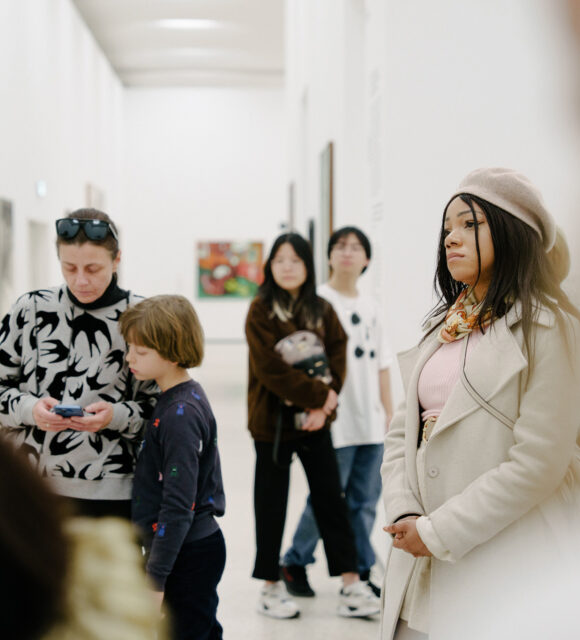About the
Städel Museum

Experiencing art, making new discoveries, coming together, learning: the Städel Museum is a place of encounter, exchange and the exploration of our past, present and future.
It collects, preserves and studies works spanning 700 years of art and teaches the public about them. With its programme and digital offers, it provides unique access to art across generations, epochs and styles—quite in keeping with the vision of its founder Johann Friedrich Städel. It is a space that stimulates our senses and puts us in touch with important questions. Who are we? Where do we come from? Where are we going? Art has inspiring answers to offer. The Städel Museum is a private foundation sustained to this day by the generous support of citizens, foundations and business enterprises of the city and region.
A Space for Art
As stipulated by the banker and businessman Johann Friedrich Städel in his will, the Städel Museum was established in 1815 as a civic foundation. Thanks to the founder’s dedication and avid collecting activities, we can today offer our visitors a virtually complete overview of 700 years of art—from the early fourteenth century to the Renaissance, from the Baroque to Classical Modernism and the very present.
Among the collection highlights are works by such artists as Lucas Cranach, Albrecht Dürer, Sandro Botticelli, Rembrandt van Rijn, Jan Vermeer, Maria Sibylla Merian, Claude Monet, Pablo Picasso, Max Beckmann, Lotte Laserstein, Francis Bacon, Louise Bourgeois, Gerhard Richter and Wolfgang Tillmans. Take an inspiring stroll through the centuries and discover your own personal favourite.
If you find yourself in Frankfurt, consider visiting one of Germany’s most important art institutions, the Städel Museum [...]
Our Purpose
In his foundation deed, Johann Friedrich Städel specified that his
considerable collection of paintings, engravings and art objects” be dedicated “to the foundation of a special Art Institute existing for itself […] to the benefit of the local city and citizens
He thus entrusted us with the task of making the works in the collection accessible to the public. Apart from preserving the collection, it is incumbent on us to study and expand it and, naturally, to develop exhibitions.
We work to accomplish this mission by offering a programme of events and activities our visitors can take advantage of on site at the Städel as well as online. Our aim is to enable wide-ranging experiences of art and its history. That makes the Städel Museum far more than just a place. It is an invitation that opens up new vistas, sharpens the senses and provides enjoyment.
The Legacy
of a Visionary Founder
Johann Friedrich Städel was born in Frankfurt am Main in 1728. His father Johann Daniel Städel had come to Frankfurt from Strasbourg to engage in trade. Johann Friedrich followed suit, initially carrying on the paternal spice business on Grosser Kornmarkt before opening his own on Rossmarkt in 1784, at the age of fifty-six. In addition to spices and coffee, he sold pigments such as indigo and metals such as lead bar. As time went on, he also became active in commission and banking transactions that ultimately paved his way to wealth.
Städel had a keen interest in art. As far back as the 1760s, he had begun filling his house with paintings, drawings, prints and small-scale sculptures, most of which he purchased on his numerous travels. Whereas in painting he concentrated on the German and Dutch Baroque, his pursuits in the area of prints and drawings were far broader: he set out to amass a comprehensive overview of the history of art. Already early on, he planned to give the public access to his art holdings and to train and foster budding artists.
In his living quarters he hosted art shows and gave private guided tours to interested individuals. Johann Friedrich Städel died in Frankfurt am Main in 1816. The final version of his will, written on 15 March 1815, contains a foundation deed. That document laid the cornerstone for the Städelsches Kunstinstitut—the original name of the museum now known the world over as the Städel Museum.
The History
of the Städel Museum
1815—A museum is founded
In 1815, photography, the typewriter and the bicycle had yet to be invented. Johann Wolfgang von Goethe wrote a poem about the ginkgo leaf as a symbol of love and friendship, and in Frankfurt’s botanical gardens, the Palmengarten, a copper beech was planted that still grows there today. It was also in that year that the banker and spice merchant Johann Friedrich Städel of Frankfurt bequeathed his centrally located house on Rossmarkt, his art and book collection and his entire fortune to the foundation bearing his name. In his will he stipulated that, with immediate effect, the “Städelsches Kunstinstitut” be open to the people of Frankfurt as a museum and art school—the present-day Städelschule. For his art institute he wanted only the best: the “mediocre” works in his collection of some 500 paintings were to be sold off to raise funds for “better” ones.
… that this Städelsches Kunstinstitut that I have founded may be a true adornment to this city and also prove useful to its citizens.
The Städel Bicentennial
When he wrote his will in 1815, Johann Friedrich Städel laid the groundwork for Germany’s oldest museum foundation. In 2015, joined by the people of Frankfurt, the Städel Museum celebrated its bicentennial with several superb exhibitions and projects. The anniversary also marked the beginning of the Digital Expansion: to this day, the Städel has continued to develop digital offers to enhance the museum visit in entertaining and technically innovative ways at no extra cost. The Städel Museum is thus fulfilling its educational mission—to make art accessible to all—far beyond the boundaries of its physical premises.
A Museum for All
Looking back on a past firmly anchored in the history of Frankfurt, the Städel carries its founder’s vision—to make the museum accessible to one and all—into the present. Over the past years it has realized groundbreaking exhibitions and research projects, its collection has been enriched by prominent new purchases, gifts and bequests, and it has continually offered an up-to-date programme of events and activities for all visitor groups.
The museum has also invested in structural measures to ensure its sustainable operability on all levels: the historical Main River façade has been restored, the Department of Prints and Drawings—complete with its Study Hall—refurbished, the Städel garden newly landscaped and planted, the Old Masters and Modern galleries decorated with a new colour scheme and equipped with a low-energy LED lighting system. The icing on the cake of your visit to the museum is the new visitors’ terrace with its spectacular views of the Frankfurt skyline. We have the great dedication of private and public supporters to thank for these many enhancements. It is they who make the Städel Museum one of Germany’s most successful art museums.
Directorate, Administration and Board of Trustees
Director
Dr. Philipp Demandt
Vice Directors
Prof. Dr. Jochen Sander, Vice Director for Scholarly Affairs
Heinz-Jürgen Bokler, Vice Director for Commercial and Personnel Affairs
Director
Philipp Demandt places a special focus on expanding the art historical canon as well as on rediscoveries, especially of women artists. For the Collection of Contemporary Art, he most recently launched a new series of annual special exhibitions. In addition to expanding the museum’s digital initiatives, another focus is on structural maintenance and strengthening the Städel Museum as a place of art, both inside and outside the museum itself.
Administration
The Städelsches Kunstinstitut is one of the earliest and most important cultural foundations. It was founded in 1815 as a civic foundation. In keeping with the wishes of the founder Johann Friedrich Städel, it is overseen by five administrators. The administration is the foundation’s representative body and appoints the director.
Wolfgang Kirsch, Chairman
Hubertus von Baumbach
Bernd Knobloch
Marija Korsch
Dr. Kersten von Schenck

Board of Trustees
The Städel Museum’s board of trustees was initiated in 2007. Its members include notable persons from the realms of business, culture and society who have committed themselves to advising on and supporting the museum’s activities.
Michael Baum
Klaus Becker
Dr. Werner Brandt
Antje Conzelmann
Prof. Dr. Andreas Dombret
Dr. Michael Endres
Uwe Fröhlich
Ulrike Hattendorff
Dr. Helga Haub
Donatus Landgraf von Hessen
Prof. Dr. Carl-Heinz Heuer
Johannes P. Huth
Hartmuth A. Jung
Roland Koch
Frank Mattern
Dr. Dirk Notheis
Dr. Nicolas Peter
Dr. Ina Petzschke-Lauermann
Karl von Rohr (Chairman)
Dr. Joachim von Schorlemer
Steffen Seibert
Jerry I. Speyer
Prof. Christian Strenger
Dr. Jens Weidmann
Martin Wiesmann
Prof. Dr. Norbert Winkeljohann
Karin Wolff
Eva Wunsch-Weber
Susanne Zeidler
Dr. Matthias Zieschang












